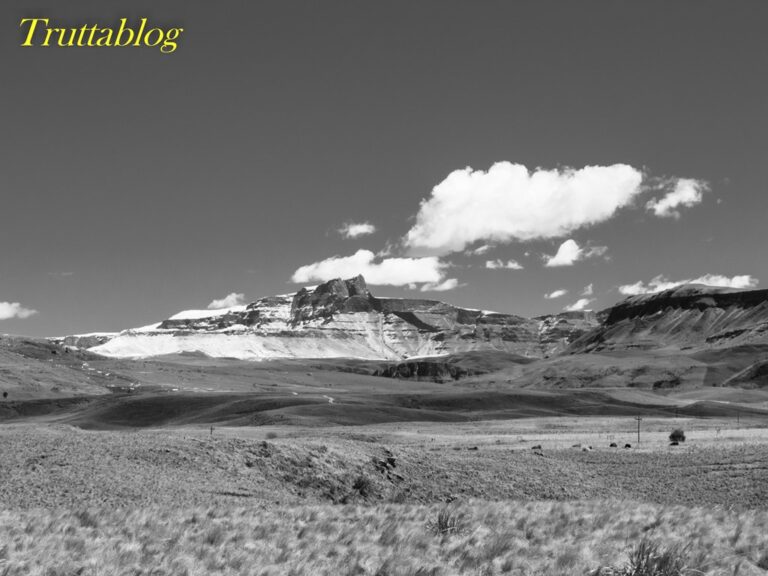
Pewter and Charcoal, Giants and the Yorkshire Dales
The writing of Laurence Catlow, and a contrast between the mountains of Yorkshire and the Drakensberg in South Africa
Home » Giants Castle

The writing of Laurence Catlow, and a contrast between the mountains of Yorkshire and the Drakensberg in South Africa
My sister reminded me the other day of what may have been my first encounter with a Puff Adder. The damned thing was lying atop an old hessian sack, trying to make itself look like a hessian sack, so that it could take out a little blonde farm boy. Since then I have stumbled on, jumped over, driven over and recoiled from these things more times than I care to remember. There was the time a bunch of us came over the saddle at Gateshead on our way back down from fishing and found a cluster of babies. A “gaggle
Here in the KZN midlands, altitude is accepted as a defining criteria for Trout water. It has long been held that trout will survive above 1200meters above sea level, and there is very little fishable water above 1800metres. So within that band of 1800m down to 1200m, there are a few critical bands, and I would argue that one of them is the 1600m band. I say that because every listed trout stream in these parts rises above 1600m. So here is where that contour runs along the front of the Drakensberg: Interesting isn’t it! For me what makes it
Seasick Steve does a wonderful rendition of “Gentle on my mind” [click that if you have Spotify] that I have been listening to lately at my tying bench. But in case you thought “beats” referred to something else, I can give you some news on this river beat: That there is my movie making friend Zig, behind the lens. He and I were on the forest section of Furth Farm on the Umgeni last week, getting some pics of this lovely stream in a spot where it runs deep between rocky banks, shaded by a forest that now comprises only
If you were to stand on the top of Giants Castle , at the source of the Lotheni and Bushmans rivers, (LINK) and send an eagle in a straight line, at a bearing of 115 degrees, to the top of Inhlosane mountain, the eagle would fly off from your feet at 3100metes above sea level. It would cross the source of the Elandshoek, which peels off to the right (the tributary of the Lotheni that joins the main river opposite the camp site), then it would cross the source of the Ncibidwane flowing away to the North, and on the